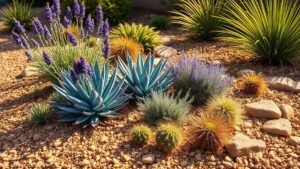Tropical plants are known for their bold foliage, vibrant colors, and exotic appeal—but they typically thrive in warm, humid environments. If you live in a non-tropical climate, you can still enjoy tropical plants with the right care and growing strategies.
This guide will show you how to successfully grow and maintain tropical plants even in colder or drier regions.
1. What Are Tropical Plants?
Tropical plants originate from regions near the equator, such as Central America, Southeast Asia, and Africa.
Common Tropical Plants:
- Banana (Musa spp.)
- Bird of Paradise (Strelitzia)
- Monstera Deliciosa
- Hibiscus
- Philodendron
- Alocasia & Caladium
- Anthurium
These plants require warm temperatures, high humidity, and bright indirect light to thrive.
2. Challenges in Non-Tropical Climates
Non-tropical climates may feature:
- Cold winters with frost and snow
- Low indoor humidity due to heating
- Shorter daylight hours in winter
- Dry air and sudden temperature changes
These conditions can stress or kill tropical plants if not properly managed.
3. Tips for Growing Tropical Plants Indoors
A. Choose the Right Location
- Place near east- or south-facing windows with bright, filtered light
- Avoid cold drafts and heaters
- Use sheer curtains to protect from intense sun
B. Maintain Warm Temperatures
- Most tropical plants prefer 65–85°F (18–29°C)
- Keep indoor temps consistent year-round
- Use heat mats for potted plants if needed
C. Boost Humidity
- Use humidity trays or group plants together
- Run a humidifier nearby (aim for 50–60% humidity)
- Mist leaves occasionally (but avoid constant moisture on sensitive species)
D. Use Well-Draining Soil
- Tropical plants dislike soggy roots
- Use mixes with peat moss, perlite, and coco coir
- Ensure pots have drainage holes
4. Caring for Tropical Plants Outdoors (During Warm Months)
If your summers are warm, take tropical plants outside—temporarily.
Outdoor Tips:
- Wait until all danger of frost has passed
- Place in part-shade or filtered sun
- Protect from strong wind or direct afternoon sun
- Bring plants back indoors in early fall
Gradually acclimate plants when moving them between environments.
5. Overwintering Tropical Plants Indoors
When cold weather returns, move plants inside to avoid frost damage.
How to Transition:
- Check for pests before bringing them in
- Prune lightly to reduce stress
- Gradually reduce watering (growth slows in winter)
- Place near a sunny window or under grow lights
Some plants may go semi-dormant—this is normal in cooler seasons.
6. Using Grow Lights for Tropical Plants
In low-light months, LED grow lights can supplement sunlight.
Choose:
- Full-spectrum LED lights
- Timers for 10–14 hours of light daily
- Adjustable height to avoid leaf burn
Grow lights are especially helpful for monstera, philodendron, and banana plants.
7. Fertilizing and Watering
Tropical plants are moderate feeders during active growth.
Fertilizing:
- Use a balanced liquid fertilizer every 2–4 weeks (spring through summer)
- Reduce feeding in winter unless under grow lights
Watering:
- Water when the top 1–2 inches of soil is dry
- Don’t let pots sit in standing water
- Use rainwater or filtered water if possible
8. Best Containers and Potting Tips
- Use lightweight pots if moving indoors/outdoors
- Repot every 1–2 years to prevent root binding
- Add support stakes for tall varieties like bird of paradise or banana
Decorative ceramic pots with drainage trays work well for indoor settings.
Conclusion: Bring the Tropics Home
With the right setup and consistent care, growing tropical plants in a non-tropical climate is absolutely possible. These stunning plants can transform your space into a lush oasis—no matter the weather outside.
Start with a few easy species, build your indoor jungle, and enjoy a slice of the tropics all year long.






